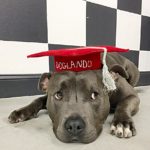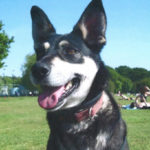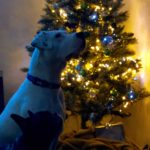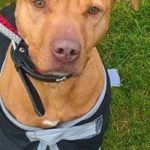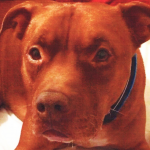Dogs Dangerously Out of Control
(Section 3 Dangerous Dogs Act 1991)
Contrary to what the media would have us all believe, most people whose dogs get them into trouble are caring and responsible dog owners. They have never been in trouble before and their pets have never put a paw wrong.
Under section 3 of the Dangerous Dogs Act 1991, an owner, or a person in charge of a dog, commits an offence if the dog causes reasonable apprehension that any person will be injured, whether or not they actually are injured. Unlike most offences in English law, no criminal intent or recklessness is required for liability to arise and a person can therefore be guilty of an offence even if their dog was on a lead and had never behaved in such a way before
Where no injury is caused, the case may only be dealt with in the magistrates’ court and the maximum penalty is six months’ imprisonment and/or a fine of £5,000. The court has the power to order the dog to be destroyed or kept under control and it may specify the measures for control (e.g. keeping the dog on a lead in public). The court can also disqualify an individual from keeping dogs and order compensation to be paid to the victim.
If your dog injures a person or an assistance dog (e.g. a guide dog), then this is a more serious offence which is known as the “aggravated” offence. The injury does not have to be a bite; a scratch or bruise would suffice. The aggravated offence can be dealt with in either the magistrates’ court or the crown court and the maximum penalties are as follows:
- Injury to an assistance dog – 3 years’ imprisonment
- Injury to a person – 5 years’ imprisonment
- Death of a person – 14 years’ imprisonment
You could also be ordered to pay a fine and/or compensation and the court has the power to disqualify you from keeping dogs.
When an “aggravated” offence has been committed, the court must order the dog to be destroyed unless it is satisfied that you are a suitable owner and that the dog does not pose a danger to the public. Expert evidence from a suitably qualified animal behaviourist will usually be required on this point.
The police have the power to seize your dog and keep it pending the outcome of the case. At Wheldon Law, our experienced dog law solicitors have excellent contacts within the police and we are sometimes able to persuade them to return dogs to their owners (with appropriate conditions) pending the outcome of proceedings.
Defences
It is a defence for the owner of the dog to show that at the time of the incident, they had left the dog in the care of someone they reasonably believed to be a fit and proper person.
Householder Defence
If the incident occurred in, or at least partly in, a building which is a dwelling (or forces accommodation) and the person injured was a trespasser who was inside, or partially inside, the property, then there may be a defence available. This is known as the ‘Householder Defence’.
Dogs Not Kept Under Proper Control
(Section 2 Dogs Act 1871)
Civil proceedings can be initiated against the owner of a dog that is dangerous and not kept under proper control. The dangerousness alleged relates to its effect on people or animals and the legislation applies to incidents in both public and private places. Because the proceedings are civil in nature, the court cannot impose a penalty on the owner or order them to pay compensation but they can order the owner to pay the costs of bringing the application and order the dog to be destroyed or kept under proper control (e.g. by keeping it on a lead in public). These proceedings can only be brought against the owner of the dog, but the application can be brought by anyone. The application must be made to the court within six months of the incident and it must be in a particular format as otherwise the proceedings will be invalid.
In 2014, the Dangerous Dogs Act 1991 was extended to cover private and public places, and this has seen a reduction in the use of this piece of legislation. However, it is still useful, particularly if a client is charged with a criminal offence and wishes to avoid having a criminal record upon conviction. It is sometimes possible to persuade the Crown Prosecution Service to substitute the criminal proceedings with civil proceedings, thus avoiding the possibility of a criminal record.
Dogs Worrying Livestock
The Dogs (Protection of Livestock) Act 1953
An offence is committed by the owner or person in charge of a dog if it attacks or chases livestock on agricultural land or if it is off-lead in a field containing sheep. The definition of livestock includes sheep, goats, cattle, poultry, pigs and horses. The definition of agricultural land is wide and extends to include allotments and orchards. The police have the power to seize a dog if they are unable to identify its owner. The maximum penalty is a fine, but it is possible to lay additional proceedings at the same time that could result in a destruction order.
Expert evidence is essential in cases of this kind as the courts take an understandably serious view when livestock has been killed. As dog law specialists, we have successfully defended numerous cases of this type and always instruct an animal behaviourist with particular expertise in dogs with a high chase-and-prey drive.
If you are under investigation for, or have been charged with a dog law offence, please call us on 01442 242999 for free initial telephone advice or email us at enquiry@wheldonlaw.co.uk.
Case Study - Shai
Shai nipped someone whilst he was being walked by his owner. We attended the police station with Shai’s owner and when the police heard the full circumstances of the incident, they were easily persuaded to take no further action against the owner.
Case Study - Ripley
Ripley’s owner wanted to move from Florida to England but was worried that the dog might be deemed to be a pit bull type in the UK. We arranged for one of our experts to travel to Florida to assess Ripley and he found him not to be a pit bull type. A copy of our expert report was provided to the police and thereafter we liaised with them over his arrival in the UK to ensure everything went smoothly.
Case Study - Pepita
Pepita was said to have been one of five dogs involved in killing an elderly lady. We adduced evidence from a bite expert that Pepita had not been involved in the attack and it was spared destruction.
Case Study - Angel
Angel was picked up as a stray by a dog warden who then handed her over to a local rescue centre. The rescue centre had concerns that Angel may be a dogo Argentino, one of the four prohibited types of dog. Two experts examined her and agreed that she was a dogo and she was seized. Despite her having a lovely temperament and an employee at the kennels wanting to be her new keeper, the police actively sought a destruction order. Fortunately, we were able to persuade the court otherwise and she now lives happily with her new keeper.
Case Study - Arthur
Arthur nipped a tradesman working at his owner’s home causing a very minor injury. Several months later, the police attended the home with a warrant and seized Arthur from his distraught family. His owner called us and we contacted the police. Arthur was returned home later the same evening. The police subsequently agreed to deal with this case by way of a community resolution with some conditions for the dog’s future control, which means his owner was spared the ordeal of having to go to court..
Case Study - Dax
Dax’s owner had concerns about his tendency to jump up so she sought advice from a professional dog trainer. The trainer used a shock collar on Dax and took him to a crowded park during the summer holidays. As a child approached them, the trainer gave Dax a shock and he bit the child. The trainer then denied any responsibility leaving our client to be prosecuted for being the owner of a dog dangerously out of control causing injury to a person. Our client pleaded not guilty and was subsequently acquitted after trial.
Case Study - Sky
Sky was a legal pit bull type dog that had been through the court exemption process. Her owner placed her in kennels and then went travelling and chose not to return to the UK. A volunteer at the kennels formed a bond with Sky and wanted to become her registered keeper but the court made a destruction order against her. After a successful judicial review of the case, Sky was eventually allowed to live with a new keeper.
Case Study - Saachi
Saachi was alleged to have run at someone knocking them over and causing an injury to their knee. His owner denied the allegation and was found not guilty after a trial in the magistrates’ court.
Case Study - Snoop
Snoop has been a customer of ours on two occasions. The first time he was seized because he was a pit bull type dog and the second was after he escaped from his owner’s rear garden and alarmed someone by barking at them. The prosecution sought Snoop’s destruction but we were able to persuade the court to allow him to return home subject to conditions.
Testimonials

"There are no words that can describe the thanks I have for you. Monty means more than the world to me for reasons you know and the past 10 months have been awful, but when I met you and had you on our side I always knew there would be hope that the worst would not happen. Thank you for everything you have done for me."

"I really want to thank you from the bottom of my heart. I really do appreciate all the hard work you put into helping me get Simba back… thank you very, very much."

"A big THANK YOU to you all for your help and advice – it was much appreciated throughout a very difficult and stressful time. And an especially big thank you to Tina Hay for all your legal wisdom – I think you should be known as ‘The Fairy Dogmother’."

"From the initial contact with Gareth which was knowledgeable and sympathetic to Kate at the court, who was excellent – well presented, knowledgeable and very informative – she presented the case superbly. Many thanks to all concerned. A very professional company."

"I cannot thank you enough for all your help. I am so fortunate that you happened to be there."

"Fantastic! All staff were polite, understanding and compassionate. Tina Hay is amazing! Everyone at Wheldon Law is absolutely lovely!"

"I would and will happily recommend your services to any person and/or organisation. Thanks to you guys my dog is safe and back home. Thank you so much."



